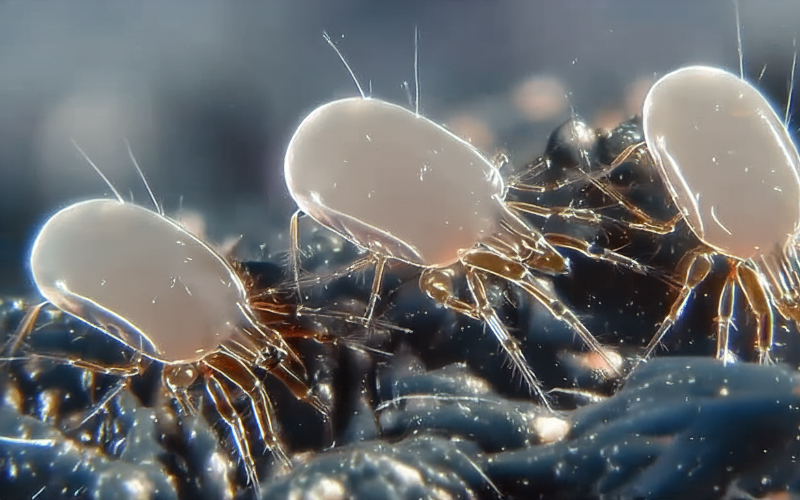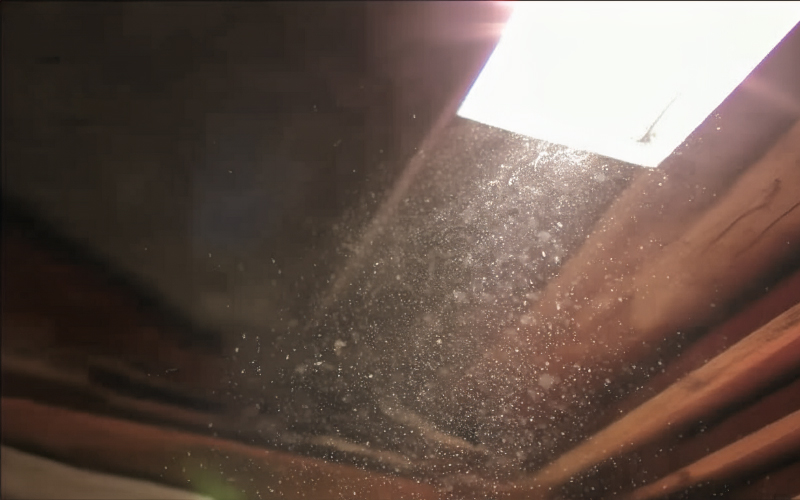Struggling with dust-induced sneezes and puffy eyes? If you’re struggling with some allergy-like symptoms you may want to learn more about the critters that could be triggering it, where they come from and why they’re causing you so much trouble.
Here’s everything you need to know about dust mites and allergies, and how to change your surroundings to ease some of your symptoms.
Why does dust cause allergies?
Many people often find that household dust causes a multitude of annoying allergy symptoms. But for the most part, it’s the microscopic dust mites that are triggering your allergy. Not the dust itself. In fact, it’s the dust mites’ droppings that actually contain the allergens that are causing your symptoms. Your body reacts in this way as it perceives the allergen to be a foreign body that needs to be expelled.

Dust mites are the leading trigger of bedroom allergens and affect up to 400 million people worldwide, including at least 45% of people with asthma! They are an invisible enemy though, and cannot be seen to the naked eye, measuring less than half a millimetre in length.
How common is a dust mite allergy?
It’s very common for children and adults to be affected by a dust mite allergy. According to Allergy UK “The UK has some of the highest prevalence rates of allergic conditions in the world, with over 20% of the population affected by one or more allergic disorder.” And the amount of people suffering with allergies continues to increase globally. That’s why thinking about your home environment and where you sleep is a great way to help you cope with irritating dust mite allergy symptoms.
Why are allergies increasing?
Common allergies caused by household allergens and irritants are thought to be on the rise due to our change in lifestyle over time. According to Allergy UK, we now spend 90% of our time indoors, and this can often be in an environment that is not properly ventilated, allowing humidity levels to rise and dust mites and other allergens to thrive.

Does Every House Have Dust Mites?
No matter how clean your home is, it’s likely that dust mites live in most. Even if there is no visible dust, the microscopic dust particles will often house dust mites.
How Do You Get Dust Mites?
Dust mites live off dead skin cells and pet dander so they tend to go wherever their food source may be. Unfortunately, that means that it’s likely that you’ll find them in places such as your carpets, your sofa, and especially your mattress and bedding.
Why Do Dust Mites Live in Bedding?
This is not only where their food source is but it’s also the ideal environment for them to thrive. Dust mites like warm, dark and moist environments - and the average person can sweat up to a litre of moisture each and every night – this is dust mite heaven! They like this type of environment because they absorb water from the atmosphere instead of drinking it. So the more moist and humid their environment, the better (for them, not for us allergy sufferers!)
DID YOU KNOW:
The weight of the average (non-wool) pillow can increase by a staggering 10% after 6 months’ use, purely because of dust mites and their droppings. This is not to mention that the average duvet, pillow and mattress topper/protector can be completely colonised in just six weeks.

How to Get Rid of Dust Mites in Your Bedroom
Figuring out how to prevent dust mites can be tricky but a good place to start is by looking at your environment and where you spend a lot of your time at home. Your bedroom can harbour a lot of dust mites so this is always a good place to start. And the best way to combat dust mites is to make their environment less hospitable. That means you’ll need bedding that stays dry, cool and moisture free.
Our wool bedding combats the humidity and moisture levels found in most other synthetic alternatives as it promotes an environment so dry that these little critters cannot colonise it (this is due to its unique ability to desorb moisture back into its environment). Our wool bedding is the first 100% natural and scientifically proven anti-allergy complete bedding solution!
For further advice on improving your home environment read our article on how to stop dust mites irritating your allergies.
